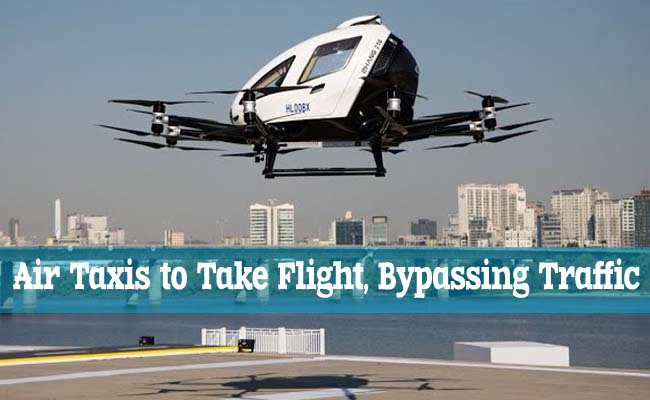Air Taxis to Take Flight, Bypassing Traffic

Thanks to app-based cabs, moving from one end of a city to another is now easy with just a smartphone. Soon, however, taxis may take to the skies, bypassing traffic altogether.
Several startups are developing models of electric air taxis, with a competitive market already taking shape. Aviation expert Thomas M. Friesacher believes that of the dozens or even hundreds of companies, only a few will likely succeed in the long term.
In the near future, the U.S. Air Force plans to introduce air taxis as a mode of transport.
Asian automotive companies like Hyundai and Xpeng are also entering the industry, using similar batteries found in electric cars. One U.S. air taxi company might begin transporting passengers from New York City to Newark Airport by 2025.
In Germany, the automobile club ADAC plans to use Volocopter aircraft for aerial rescue missions.
Oliver Reinhardt, an executive at Volocopter, highlights a key advantage: their aircraft cost significantly less than helicopters, and their maintenance costs are lower as well.
Safety regulations in air travel are exceptionally strict. Before production, every aircraft must pass extensive testing, with an acceptable accident risk of only one in a billion flight hours. Reinhardt asserts that their safety standards match those of any passenger aircraft in Europe.
The European Union Aviation Safety Agency (EASA), which oversees aviation in Europe, has established specific regulations for air taxis. Major changes are coming for pilots, who now require new certifications and training courses.
EASA head Giuseppe Scannapieco explains that under current regulations, air taxi pilots will need commercial pilot licenses for planes or helicopters. Specific skills, knowledge, and capabilities will also be required.
Volocopter is the first company approved for pilot training. They are designing a program aimed at licensed pilots with experience flying commercial passenger planes or helicopters, which only need training on the new aircraft.
The training program includes handling emergency situations, such as snow, thunderstorms, rain, and high winds, as well as managing technical issues. Takeoff and landing will require particular focus due to the stress involved. Aviation expert Thomas M. Friehsacher reminds us that most accidents occur during takeoff and landing phases.
If air taxis are to operate on a large scale, completely new air routes and traffic regulations will be necessary. Europe is implementing the U-Space system, a new traffic management system.
Scannapieco notes that new policies are being introduced to control air traffic, but each country will have jurisdiction over its own “high space.”
So, what will the actual air taxi experience be like, and how will it function?
Bianca Schuchardt from the German Aerospace Center explains that air taxis will wait at designated vertiports. Passengers can board and fly to destinations within the same city, neighboring cities, or even other chosen locations. The market holds vast potential. By 2050, air taxis could be operating in over 200 cities worldwide




